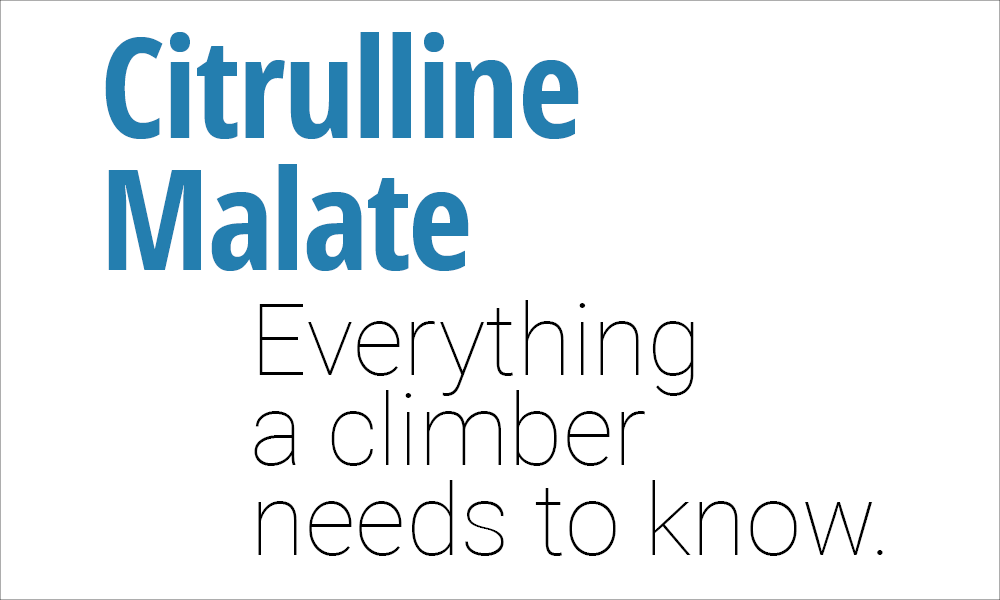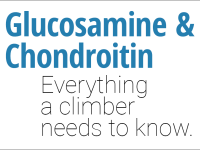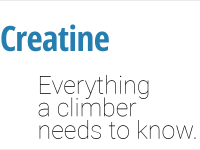Citrulline malate is a potentially beneficial but relatively unstudied supplement. It could technically be considered two supplements in a compound form: the amino acid L-citrulline and the organic acid malate. Though many studies attribute the benefits of citrulline malate to only the L-citrulline portion, it’s likely that both parts are important for the total benefit, and perhaps even work in synergy.
For example, the L-citrulline fragment could boost nitric oxide production, thereby improving blood flow and oxygen delivery to the working muscle. L-citrulline is also a part of the urea cycle that transforms the ammonia formed naturally during exercise into urea to be excreted, and in this way could also improve exercise.
On the other hand, malate could also be responsible for the ergogenic effects of citrulline malate, at least partially. Malate is an intermediary compound formed during aerobic energy production, and increasing its availability could improve the efficiency of the aerobic energy cycle.
There aren’t enough studies to tease apart which compound is most beneficial, but at least one study indicates that the two compounds are more effective together than separate while a second study found L-citrulline alone to have no benefit.1,2 Ultimately, it doesn’t matter—citrulline and malate almost always come together (in supplement form), so you’d have to go out of your way to take one separate from the other.
The Benefits of Citrulline Malate
Citrulline malate delays fatigue by increasing energy production,3–7 most likely aerobic energy production,3 and by improving the resynthesis rate of phosphocreatine.1,3 Phosphocreatine is an anaerobic energy system that provides energy for the first few seconds of a given movement and one of the most important energy systems for climbers.8 An entire article could be (and will be) written on the importance of creatine for climbers, but for now it suffices to say that improving phosphocreatine resynthesis is hugely beneficial.
Since climbing is still a relatively understudied sport, we don’t always have the benefit of looking at data pulled from sport-specific (or movement-specific) studies. In this rare case, we do: one study examined the effects of citrulline malate on forearm flexor fatigue and found that citrulline malate led to a 34% increase in aerobic energy production and a 20% increase in phosphocreatine resynthesis.3 This doesn’t translate to a 34% improvement in total work done—the aerobic energy only took the place of an anaerobic energy source like phosphocreatine or glycogen—but it does mean their exercise was more “efficient”. For every watt of power produced, muscle pH dropped by 21% less than normal.
Benefits for Sport Climbing
For a sport climber, this increased efficiency means improved power endurance. If you can do more work without precipitous drops in muscle pH, your muscles will last longer and with greater power. And, there are two levels here: first during a single climb, and second over the course of an entire session. By increasing your reliance on virtually unlimited aerobic energy (in the form of fat), you save more of the extremely limited anaerobic energy sources (phosphocreatine and carbohydrates) for later climbs.
Benefits for Bouldering
A boulderer will most likely not realize any improvements in power endurance over a single climb since most boulder problems are too short to induce muscle acidosis-related fatigue. However, improving the rate of phosphocreatine resynthesis will help the boulderer recover between problems faster, which is of obvious benefit to the impatient (like myself and I suspect most boulderers). As with sport climbers, boulderers too can expect longer sessions thanked to increased reliance on virtually unlimited aerobic energy and less reliance on extremely limited anaerobic phosphocreatine and glycogen.
Benefits for Training
A few studies show citrulline malate to improve the number of reps capable of being done, especially in later sets.4,6,7 While these studies focused on weight training, there is no reason to assume different types of training wouldn’t benefit equally as much; increasing total reps is key to getting stronger whether you’re bench pressing or campusing, deadlifting or doing pull-ups on pinches. If you can train harder and longer, even if just marginally, you will see your training gains stack over time.
Solid Hypotheses Back Citrulline Malate
As already mentioned, citrulline malate does not have a ton of evidence to support its use. Normally, I wouldn’t advocate for a supplement that has only a few small studies to back it up, but I feel in this case there is a reasonable expectation that citrulline malate should have the effect it has been documented to have (increased aerobic energy use).
To begin with, let’s consider the potential of L-citrulline to boost nitric oxide production. Some of you may remember arginine supplements as nitric oxide boosters, and though they’re still around they are basically “has-beens” of the sports nutrition world. Study after study failed to note either a reliable or a significant effect of oral arginine on nitric oxide production or even on plasma arginine because it turns out oral arginine is relatively poorly absorbed.
But oral L-citrulline is well absorbed—and even better, it acts like a time-released form of arginine, boosting plasma levels steadily over a much longer period of time. Thus, even though arginine is all washed-up, there’s good reason to suspect L-citrulline is a stand-up citizen and will deliver.
It’s also worth noting that there are at least three separate ways citrulline malate could boost sports performance, and only one needs to happen for the effect to be real. Citrulline malate could boost performance by increasing nitric oxide production, by enhancing clearance of the ammonia created during exercise (through citrulline’s role in the urea cycle), or by increasing oxaloacetate availability in the citric acid cycle (oxaloacetate is a rate-limiter in this cycle, and malate is easily converted to oxaloacetate). It very well may turn out that all three play a role, but the point is that we have three reasons to expect positive results from citrulline malate.
So citrulline malate isn’t robustly supported by evidence yet, but there is a plausible mechanism through which it would exert its effects—three plausible mechanisms. We may find that it doesn’t really do anything, but I would place my bet on it being at least marginally helpful for sport.
Adverse Effects
Citrulline malate has no true adverse effects. One study noted slight stomach discomfort in a few subjects after taking 8 grams,4 but this effect is not widely reported.
Citrulline malate is, however, extremely sour (which is one possible cause for any stomach discomfort). In fact, malate is used by many candy manufacturers to turn regular old gummies into sour gummies, and malate (or malic acid) is also found in many naturally sour fruits like apples—in fact, the root of the word “malate” is “malum”, a Latin word for apple (or fruit in general). As such, expect citrulline malate to make any liquid you add it to sour, and unless you really like sour tastes you’ll need to mix it with at least a cup of water.
(A second fun fact: the root of “citrulline” comes from the watermelon genus “Citrullus”, so “citrulline malate” is kind of like “watermelon apple”.)
Dosage
As a relatively unstudied supplement, we can’t say for certain what the “ideal” dose of citrulline malate is. That being said, most studies that get positive results use either a 6 gram or 8 gram dose, so until we know more that is as good a dose as any.
To get the most effect out of citrulline malate, it needs to be in your system by the time you begin exercise—and that takes a bit of planning. Take your dose at least a half hour prior to exercise, but preferably an hour (especially if you’ve eaten recently, which will slow down absorption).
If your session is going to be long (over two hours), you may benefit by adding citrulline malate to your workout drink (and many premade formulations already have it) to ensure plasma levels don’t dip. There’s no hard or fast rule here, but given that levels will already be elevated you don’t need as much to keep them elevated—2 to 4 grams per hour should suffice.
In sum:
An Hour before Exercise
8 grams (1 tablespoon), mixed with at least 1 cup water (or to taste).
During Exercise
2 to 4 grams (about 1 heaping teaspoon) mixed into your normal sports drink/water.
How to Choose the Right Product
Truthfully, there are very few citrulline malate products out there, and none produced by well-known and reputable companies. The only company I absolutely trust in terms of getting the product I’ve purchased is TrueNutrition.com, which is mostly a bulk wholesaler of nutrition ingredients. This is where I get nearly all my sports supplement ingredients from, and they’ve always been extremely helpful in my interactions with them in the past. They’ve even sent me the specification sheets for ingredients (the scientific data sheets that include country of origin, ingredient amounts, contaminants in parts per million, etc.), which gives me reasonable faith in the product they’re supplying.
At first glance, citrulline malate is relatively expensive—but then take note of the bulk discount. You can get a kilogram of the stuff (2.2 lbs) for marginally more than a half kilogram. TrueNutrition.com is a bulk retailer, and it pays to order in bulk (especially considering shipping costs).
If you do use TrueNutrition.com, you can use the code BNRY639 to get a 5% discount off your entire order. Full disclosure, I get a small kickback if you use this code and are a new customer—but hey, you get something too. And just so you know I offer this in good faith, be sure to check their Promo page for any better deals, because you only get to choose one. Usually 5% off is the best deal, but sometimes it’s not!
Conclusion
Okay, citrulline malate isn’t one of the “top” supplements I would always recommend to all climbers no matter what. It’s relatively unstudied, and that disqualifies it from such an enviable spot because to me “must take” implies solid, positive research and not just plausible hypotheses and probable benefits. But I would say that there is a lot going for citrulline malate, and it’s worth adding to your supplement regimen with the addendum of “keep this site bookmarked so you can stay up-to-date on new research”, because I will change my recommendation if new evidence suggests I should.
I would also add that citrulline malate is relatively unique in the sports supplement world because it can be considered a flavoring agent as well as an ergogenic supplement. Personally, I find sour sports drinks to be more palatable while working out and citrulline malate makes this happen. No new research can change that.
The bottom line is that citrulline malate is a promising supplement that could eventually be considered a must-take for climbers if the research continues in the direction it’s currently headed. What more could a climber want than a supplement that improves blood flow to working muscles (thereby decreasing pump) and increases reliance on limitless aerobic energy systems rather than limited anaerobic ones (thereby increasing endurance)? The only thing I can think of is a supplement that allows a climber to defy gravity—but that’s just science fiction.
Update 6/18/18: Over the past few years, citrulline malate has not lived up to its promise. It’s not that we can say it definitely doesn’t work, but more studies have come back negative. Furthermore, there is an ongoing problem with citrulline malate in which no study includes more than about 7-15 participants; while this might have been enough to give the supplement the initial go-ahead for further study, we really need bigger studies to draw more accurate conclusions about the effects and effect size of citrulline malate. For these reasons, I’ve downgraded citrulline malate to a “neutral”—it may still prove to be effective in the future, but right now it’s appearing that it probably doesn’t do a lot (except, of course, make your sports drink nice and sour!).














2019 meta-analysis finds a statistically significant small effect
https://www.ncbi.nlm.nih.gov/pubmed/30895562
Thanks for sharing! I haven’t done the supplement update post for this year yet, so that’ll make it on. A very small effect, though, and probably not relevant to most of us unfortunately.
Do you have an opinion on using Citrulline combined with beetroot?